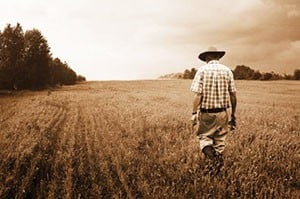UAMS Report Identifies Rural Health Needs
| Nov. 16, 2012 | The University of Arkansas for Medical Sciences (UAMS) Center for Rural Health today released the first comprehensive report on rural health in Arkansas, which identifies the health care needs, disparities and adversities in rural areas and recommends a proven action model for meeting those challenges.
“The Picture of Rural Health in Arkansas, A Call to Action” pulls together information from almost 100 different surveys, studies and databases by other UAMS offices and academic medical departments as well as national and state institutions of public health. Its purpose is to raise awareness on key health issues for rural Arkansans while also motivating dialogue and creative thinking that could improve rural health in Arkansas.
The report can be found at http://ruralhealth.uams.edu/centerforruralhealth under Reports and Publications.
“The 56-page report represents an important new step for UAMS programs and rural community partners across Arkansas,” said Ann Bynum, director of UAMS Center for Rural Health and assistant vice chancellor of regional programs. “Local communities, institutions of higher education, and health care agencies will be able to use this report”
To improve the health of the state’s rural communities and their residents, the Center for Rural Health tries to encourage partnerships, look for collaborative opportunities and leverage existing resources to address key rural health needs. It combines the academic and clinical resources found only at UAMS and extends these strengths to health care facilities and providers in rural Arkansas.
“The report shows that so much of what affects health comes outside of the doctor’s office,” Bynum said. “We want the information to really help communities create solutions that make it easier for people to be healthy in their own communities. We focused on specific factors that we know affect health.”
With graphs, maps and tables, “The Picture of Rural Health” provides at-a-glance access to information on a wide range of issues ranging from colorectal cancer to teen pregnancy and fast-food consumption. It also includes data on socio-economic factors that indirectly affect public health such as household income and literacy. Color-coded maps show how each county stands in comparison to all other counties in a particular data set.
Among the many county-to-county comparisons and other information the report presents are that: · Benton County ranks first in health outcomes, and Phillips County is 75th out of 75 counties · Heart disease, cancer, stroke, chronic low respiratory disease and unintentional injury are the five leading causes of death among Arkansans aged 1-85. · Hypertension (high-blood pressure) increased from 25.1 percent of the state population in 1995 to 31.6 percent in 2011. · Of the 19 counties with the highest proportion of fast-food restaurants, 10 are in or near the Delta region and six are in the southwest corner of Arkansas.
“I think it paints a picture that Arkansas ranks very low in health factors,” Bynum said. “We know we rank 47th as a state in health factors. I hope this report will draw the attention of communities to their specific county. Locally is where it has to start. They have to look at their county, though, and decide what they want to do about it.”
An 11-page “Call To Action” included in the publication outlines six steps to address public health issues along with the purpose of each step, who to involve and what to do to make it happen. Step 1 is Work Together, and subsequent steps are Assess Needs & Resources, Focus on What’s Important, Choose Effective Policies & Programs, Act on What’s Important and Evaluate Actions.
The Robert Wood Johnson Foundation and the University of Wisconsin Health Institute designed the action model and provided some of the information in the report.
“The UAMS Center for Rural Health stands ready for any community that requests support addressing their health needs,” Bynum said. “We will send people out to their community to work with the leadership there and guide them all the way through an action plan.” |
